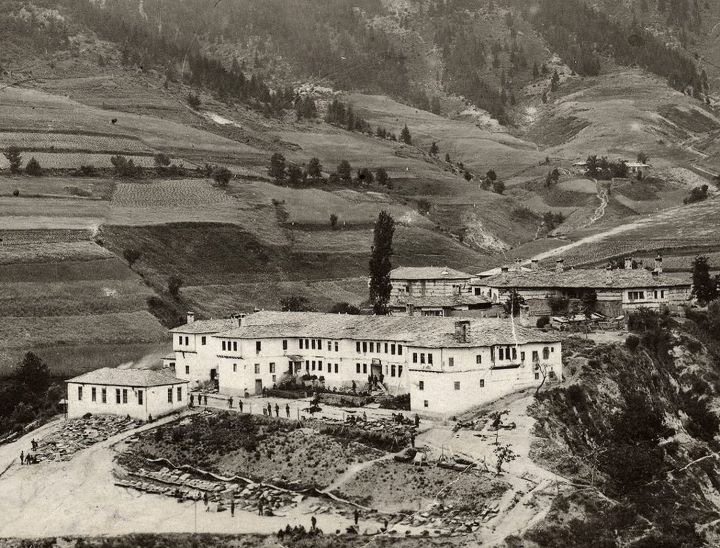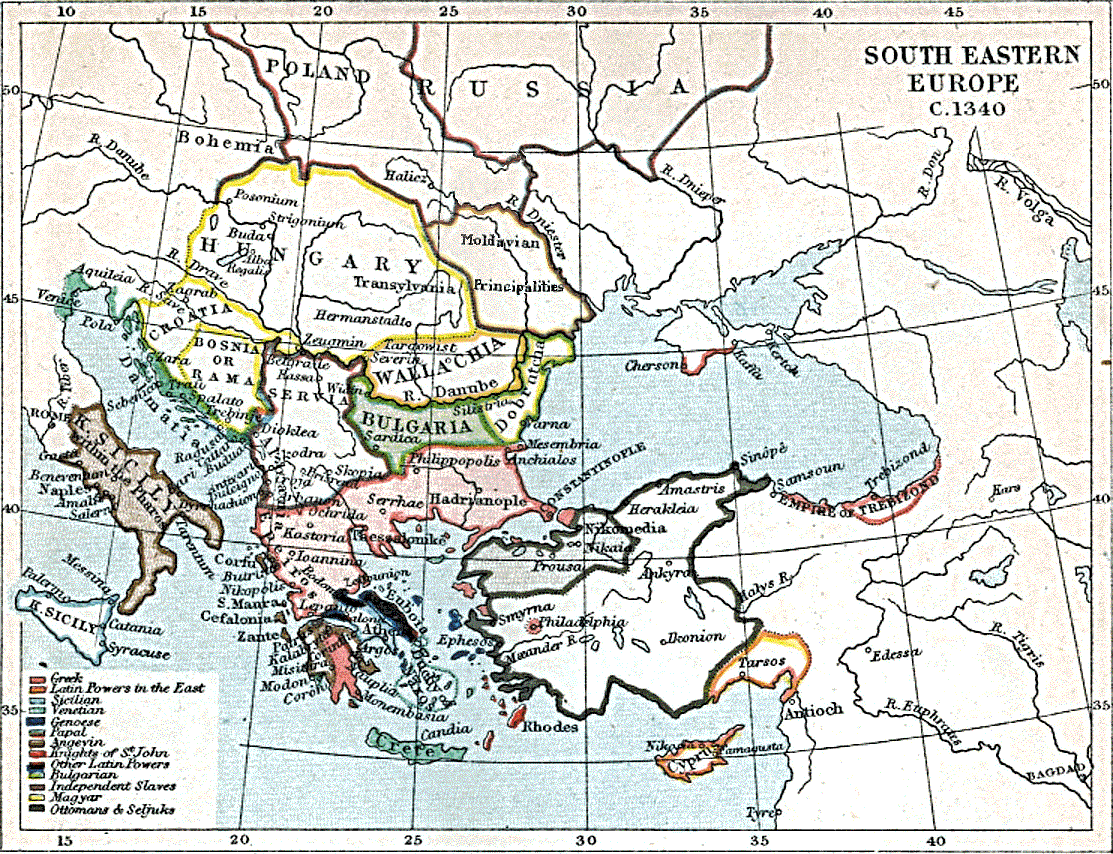|
Smolyan
Smolyan ( bg, ąĪą╝ąŠą╗čÅąĮ) List of cities and towns in Bulgaria, is a town and ski resort in the south of Bulgaria near the border with Greece. It is the administrative and industrial centre of the homonymous Smolyan Province. The town is built along the valley of Cherna ("Black") and Byala River, Byala ("White") rivers in the central Rhodope Mountains which makes him the longest city in Bulgaria. It is also located at foot of the mountain's highest peak Golyam Perelik - 2191m. Smolyan is just 10-15 minutes drive from the popular ski resorts Pamporovo and Chepelare. As of June 2022 it has a population of 30 689 inhabitants. Name The name of the town comes from the local Slavic tribe of the Smolyani, the name of whom is probably cognate to the Slavic word ''smola'' ("resin"). History According to archaeological evidence, the area around Smolyan was first settled in the 2nd millennium BC, 2nd-1st millennium BC. In the Middle Ages it acquired its name from the Slavic peoples, Sla ... [...More Info...] [...Related Items...] OR: [Wikipedia] [Google] [Baidu] |
Smolyan Province
Smolyan Province ( bg, ą×ą▒ą╗ą░čüčé ąĪą╝ąŠą╗čÅąĮ, ''Oblast Smolyan''; former name Smolyan okrug) is a province in Southern-central Bulgaria, located in the Rhodope Mountains, neighbouring Greece to the south. It is named after its administrative and industrial centre ŌĆö the city of Smolyan. The province embraces a territory of .Bulgarian Provinces area and population 1999 ŌĆö National Center for Regional Development ŌĆö page 90-91 that is divided into 10 municipalities with a total population of 124,795 inhabitants, as of December 2009. [...More Info...] [...Related Items...] OR: [Wikipedia] [Google] [Baidu] |
List Of Cities And Towns In Bulgaria
This is a complete list of all cities and towns in Bulgaria sorted by population. Province capitals are shown in bold. Primary sources are the National Statistical Institute (NSI) and the Bulgarian Academy of Sciences. The largest city is Sofia with about 1.3 million inhabitants and the smallest is Melnik with about 300. Smallest towns are not necessarily larger than all villages as many villages are more populous than many towns, compare Lozen, a large village with more than 6,000 inhabitants. List See also *List of villages in Bulgaria * Nomenclature of Territorial Units for Statistics (NUTS) of Bulgaria *List of cities in the European Union by population within city limits *List of European cities by population within city limits References External links Map main cities in BulgariaaVisitmybulgaria.comMap of Bulgarian towns at BGMaps.com* Veliko Tarnovo of Bulgaria {{DEFAULTSORT:List Of Cities And Towns In Bulgaria Cities A city is a human settlement ... [...More Info...] [...Related Items...] OR: [Wikipedia] [Google] [Baidu] |
Rhodope Mountains
The Rhodopes (; bg, ąĀąŠą┤ąŠą┐ąĖ, ; el, ╬Ī╬┐╬┤ŽīŽĆ╬Ę, ''Rodopi''; tr, Rodoplar) are a mountain range in Southeastern Europe, and the largest by area in Bulgaria, with over 83% of its area in the southern part of the country and the remainder in Greece. Golyam Perelik is its highest peak at . The mountain range gives its name to the terrestrial ecoregion Rodope montane mixed forests that belongs in the temperate broadleaf and mixed forests biome and the Palearctic realm. The region is particularly notable for its karst areas with their deep river gorges, large caves and specific sculptured forms, such as the Trigrad Gorge. A significant part of Bulgaria's hydropower resources are located in the western areas of the range. There are a number of hydro-cascades and dams used for electricity production, irrigation, and as tourist destinations. In Greece, there are also the hydroelectric power plants of Thisavros and Platanovrysi. The Rhodopes have a rich cultural heritage including a ... [...More Info...] [...Related Items...] OR: [Wikipedia] [Google] [Baidu] |
Chepelare
Chepelare ( bg, ą¦ąĄą┐ąĄą╗ą░čĆąĄ ) is the principal town in Chepelare Municipality, part of Smolyan Province in Southern Bulgaria. It is situated in the central part of the Rhodopes, on the banks of Chepelare River. Chepelare is a popular winter resort with one of the longest ski runs in Southeastern Europe. It is located near Pamporovo, one of the biggest Bulgarian ski resorts. As of December 2009, the town has a population of 5,412 inhabitants.Bulgarian National Statistical Institute - towns in 2009 The town is known for the only ski and snowboard factory in the . The factory cooperates with the ski brand '' |
Pamporovo
Pamporovo ( bg, ą¤ą░ą╝ą┐ąŠčĆąŠą▓ąŠ, ''pronunciation'': /pam'porovo/) is a popular ski resort in Smolyan Province, southern Bulgaria. It is set amongst Norway spruce forests and is primarily visited during the winter for skiing and snowboarding. It is also a popular tourist place in summer. The hub of Pamporovo comprises a number of hotels and bars. It is a family-friendly resort and suited for complete beginners and intermediates. Location The resort is set in the southern Rhodope Mountains at an altitude of 1620 meters above sea level. The highest peak in the area, Snezhanka Peak (Bulgarian: ąĪąĮąĄąČą░ąĮą║ą░) at 1928 m, is several hundred meters above the resort and hosts Snezhanka Tower. Pamporovo is around 260 km away from Sofia, 85 km south of Plovdiv, 15 km north of Smolyan, and 10 km south of Chepelare. Skiing The resort has 55 km of ski-runs and 38 km of cross-country skiing tracks served by 18 lifts with a total capacity of 13,000 pers ... [...More Info...] [...Related Items...] OR: [Wikipedia] [Google] [Baidu] |
Rhodope Mountains
The Rhodopes (; bg, ąĀąŠą┤ąŠą┐ąĖ, ; el, ╬Ī╬┐╬┤ŽīŽĆ╬Ę, ''Rodopi''; tr, Rodoplar) are a mountain range in Southeastern Europe, and the largest by area in Bulgaria, with over 83% of its area in the southern part of the country and the remainder in Greece. Golyam Perelik is its highest peak at . The mountain range gives its name to the terrestrial ecoregion Rodope montane mixed forests that belongs in the temperate broadleaf and mixed forests biome and the Palearctic realm. The region is particularly notable for its karst areas with their deep river gorges, large caves and specific sculptured forms, such as the Trigrad Gorge. A significant part of Bulgaria's hydropower resources are located in the western areas of the range. There are a number of hydro-cascades and dams used for electricity production, irrigation, and as tourist destinations. In Greece, there are also the hydroelectric power plants of Thisavros and Platanovrysi. The Rhodopes have a rich cultural heritage including a ... [...More Info...] [...Related Items...] OR: [Wikipedia] [Google] [Baidu] |
Provinces Of Bulgaria
The provinces of Bulgaria ( bg, ąŠą▒ą╗ą░čüčéąĖ ąĮą░ ąæčŖą╗ą│ą░čĆąĖčÅ, oblasti na BŪÄlgarija) are the first-level administrative subdivisions of the country. Since 1999, Bulgaria has been divided into 28 provinces ( bg, ąŠą▒ą╗ą░čüčéąĖ, links=no ŌĆō ''oblasti;'' singular: ŌĆō ''oblast''; also translated as "regions") which correspond approximately to the 28 districts (in bg, links=no, ąŠą║čĆčŖą│ ŌĆō ''okrug, okrŪÄg'', plural: ŌĆō ''okrŪÄzi''), that existed before 1987. The provinces are further subdivided into 265 municipalities (singular: ŌĆō ''obshtina'', plural: ŌĆō ''obshtini''). Sofia ŌĆō the capital city of Bulgaria and the largest settlement in the country ŌĆō is the administrative centre of both Sofia Province and Sofia City Province (Sofia-Grad (toponymy), grad). The capital is included (together with three other cities plus 34 villages) in Sofia Capital Municipality (over 90% of whose population lives in Sofia), which is the sole municipality comprising Sofia City ... [...More Info...] [...Related Items...] OR: [Wikipedia] [Google] [Baidu] |
Smolyani
The Smolyani ( bg, čüą╝ąŠą╗čÅąĮąĖ; in Byzantine sources ''Smolenoi'' or ''Smoleanoi'') were a medieval Slavic tribe that settled in the Rhodope Mountains, the valley of the Mesta River and the region around Blagoevgrad Province, possibly in the 7th-8th century. The tribe revolted against the Byzantine authorities of Constantinople in 837 and were supported by Bulgarian ruler Presian, who, together with his deputy ''Kavhan'' Isbul, crossed the lands of the Smolyani and conquered the territory as far south as Philippi, including most of Macedonia. The city of Smolyan in southern Bulgaria is named after this tribe. See also *List of Medieval Slavic tribes This is a list of Slavic peoples and Slavic tribes reported in Late Antiquity and in the Middle Ages, that is, before the year AD 1500. Ancestors *Proto-Indo-Europeans (Proto-Indo-European speakers) ** Proto-Balto-Slavs (common ancestors of Bal ... * Presian Inscription References * Sclaveni First Bulgarian Empire M ... [...More Info...] [...Related Items...] OR: [Wikipedia] [Google] [Baidu] |
Adrianople Vilayet
The Vilayet of Adrianople or Vilayet of Edirne ( ota, ┘ł┘䞦┘Ŗž¬ ž¦ž»ž▒┘å┘ć; ''Vil├óyet-i Edirne'') was a first-level administrative division (vilayet) of the Ottoman Empire. This vilayet was split between Turkey and Greece in 1923, culminating in the formation of Western and Eastern Thrace after World War I as part of the Treaty of Lausanne. A small portion of the Vilayet was given to Bulgaria in the Treaty of Bucharest (1913) after the Balkan wars. In the late 19th century it reportedly had an area of .Europe by ├ēlise├® Reclus, page 152 In the east it bordered with the Istanbul Vilayet, the |
Golyam Perelik
Golyam Perelik ( bg, ąōąŠą╗čÅą╝ ą¤ąĄčĆąĄą╗ąĖą║ ) is the highest peak in the Rhodope Mountains, situated 19 km to the west of Smolyan. It makes the Rhodopes the seventh highest Bulgarian mountain range after Rila, Pirin, Stara Planina, Vitosha, Osogovo and Slavyanka. The peak is easily accessible, but currently{{when, date=February 2013 cannot be climbed because a unit of the Bulgarian Army is stationed in its vicinity. Perelik Point on Robert Island, South Shetland Islands The South Shetland Islands are a group of Antarctic islands with a total area of . They lie about north of the Antarctic Peninsula, and between southwest of the nearest point of the South Orkney Islands. By the Antarctic Treaty of 195 ... is named after Golyam Perelik. External links A guideline of the Bulgarian mountains - The highest peaks (in Bulgarian) Rhodope Mountains Mountains of Bulgaria Landforms of Smolyan Province Two-thousanders of Bulgaria ... [...More Info...] [...Related Items...] OR: [Wikipedia] [Google] [Baidu] |
Bulgaria
Bulgaria (; bg, ąæčŖą╗ą│ą░čĆąĖčÅ, BŪÄlgariya), officially the Republic of Bulgaria,, ) is a country in Southeast Europe. It is situated on the eastern flank of the Balkans, and is bordered by Romania to the north, Serbia and North Macedonia to the west, Greece and Turkey to the south, and the Black Sea to the east. Bulgaria covers a territory of , and is the sixteenth-largest country in Europe. Sofia is the nation's capital and largest city; other major cities are Plovdiv, Varna and Burgas. One of the earliest societies in the lands of modern-day Bulgaria was the Neolithic Karanovo culture, which dates back to 6,500 BC. In the 6th to 3rd century BC the region was a battleground for ancient Thracians, Persians, Celts and Macedonians; stability came when the Roman Empire conquered the region in AD 45. After the Roman state splintered, tribal invasions in the region resumed. Around the 6th century, these territories were settled by the early Slavs. The Bulgars, led by Asp ... [...More Info...] [...Related Items...] OR: [Wikipedia] [Google] [Baidu] |
Momchil
Momchil ( bg, ą£ąŠą╝čćąĖą╗, el, ╬£╬┐╬╝ ╣ä╬Č╬»╬╗╬┐Žé or ╬£╬┐╬╝╬╣Žä╬Č╬»╬╗╬▒Žé, sr, ą£ąŠą╝čćąĖą╗ąŠ / Mom─Źilo; ŌĆō 7 July 1345) was a 14th-century Bulgarian brigand and local ruler. Initially a member of a bandit gang in the borderlands of Bulgaria, Byzantium and Serbia, Momchil was recruited by the Byzantines as a mercenary. Through his opportunistic involvement in the Byzantine civil war of 1341ŌĆō1347, where he played the various sides against each other, he became ruler of a large area in the Rhodopes and western Thrace. Momchil achieved initial successes against Turks and Byzantines alike, setting Turkish ships on fire and almost managing to kill one of his main opponents at the time, John VI Kantakouzenos. Despite this, he was defeated and killed by a joint ByzantineŌĆōTurkish army in 1345. Due to his opposition to the Turks, he is remembered in popular South Slavic legend as a fighter against the Turkish invasion of the Balkans. Brigandage and role in the Byzantin ... [...More Info...] [...Related Items...] OR: [Wikipedia] [Google] [Baidu] |




